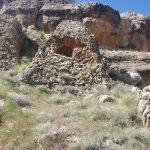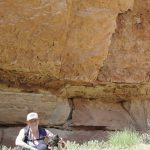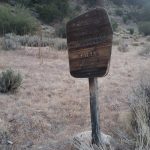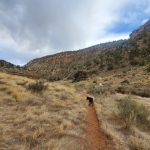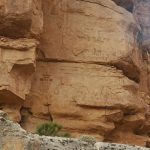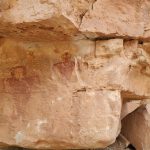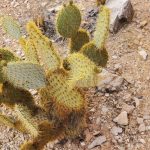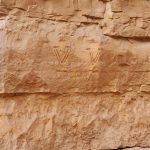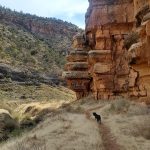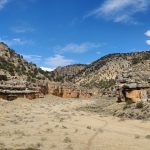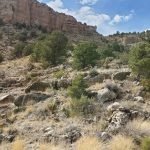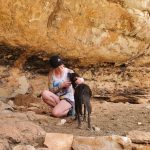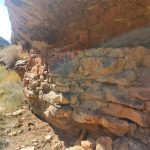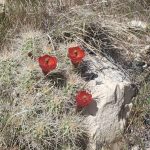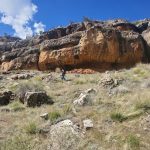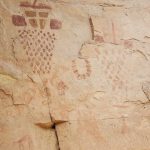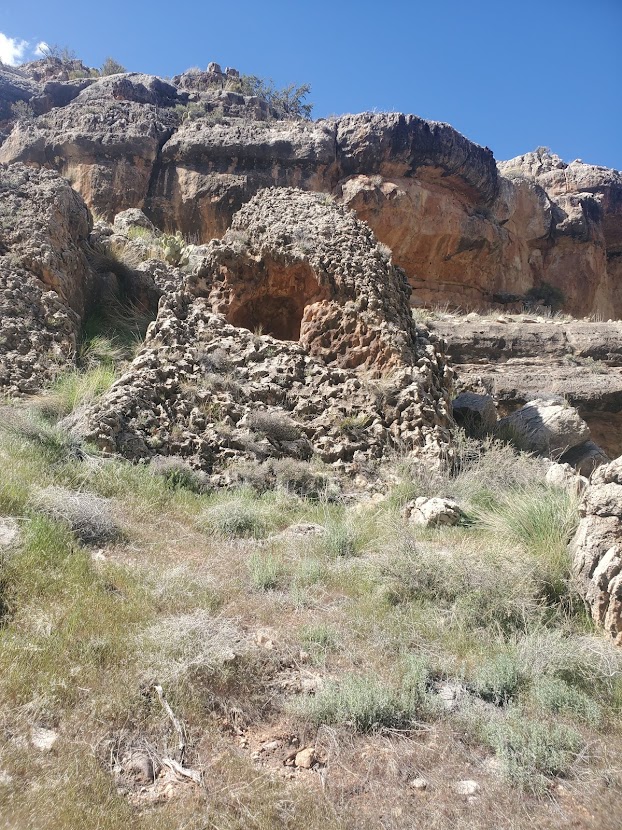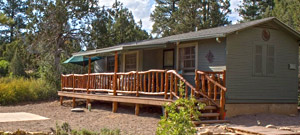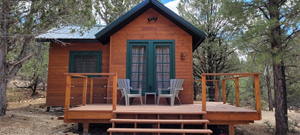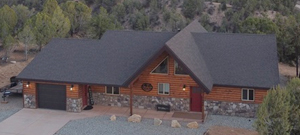Deep in the Northern Arizona desert lies a fourteen mile art gallery filled with some of the most elaborate rock art in the area. Snake Gulch features an array of petroglyphs and pictographs that shout a story of a civilization long ago. The canyon is a part of the Kaibab National Forest and provides access to Kanab Creek Wilderness. The walls of the rugged museum feature unique, colorful illustrations remaining incredibly well preserved.
The road to the trailhead veers off AZ-389 E onto the dirt and gravel Forest Service Road 22. In the past the road was well maintained and accessible by most passenger vehicles. In recent months, however, it was washed out and was even closed for a few months. It has since reopened, but high clearance four wheel drive is required to reach the trailhead. The final twenty minutes of the drive requires a bit of maneuvering to avoid large holes.
The road ends as it pours into a circular parking area. A panel provides a brief overview of the trail and a register beckons hikers to sign in and out. While the trail is generally fourteen miles round trip, hikers can choose to turn around at any point during the journey. The majority of the trail is relatively flat. Horses and dogs are welcome. The trail is in full sunlight until about two hours before dusk when the walls cast dramatic shadows across the canyon floor.
A few minutes into the trail, the remains of an old stone cabin become visible off to the right. The trail veers to the left, leaving the stones behind as the path dives deeper into the canyon. It passes through a short fence and continues for a bit before the first rock art appears. The trail crosses a wash to the right and climbs up the hill to a small alcove covered in ancient petroglyphs. The busy mural is full of sheep, human figures, mountain goats, and a variety of other images up to interpretation. This artwork is unique for the trail as it is carved into the rock, also known as petroglyphs. The rest of the art on the canyon walls is painted on, referred to as pictographs.
Our Vacation Rentals:
Save Up to 15% When You Book Directly
As the trail continues it can be difficult to decide where to look. The majority of the rock art stands on the right wall, but some images are painted back across the wash on the left side. Hikers will want to take their time and really survey the rocks to discover as much as possible. Colorful pictures are painted in a variety of reds, yellows, and browns. Some of my favorites resemble logos from high school varsity jackets and giant pineapple people.
In addition to boasting the region’s largest art gallery, the canyon houses plenty of cacti and desert vegetation, small scattered caves and holes for animals, and even ancient artifacts. Please refrain from sitting on, climbing on, or drawing on the rock art. Snake Gulch is truly a treasure trove in the Northern Arizona desert. The trail offers the most dense collection of petroglyphs and pictographs I have ever seen in one area. I know I could spend endless amounts of time taking in the artwork, interpreting and appreciating its creativity. It’s important to do our part to keep the beauty around for generations to come.
Written by Lauren Kehoe

